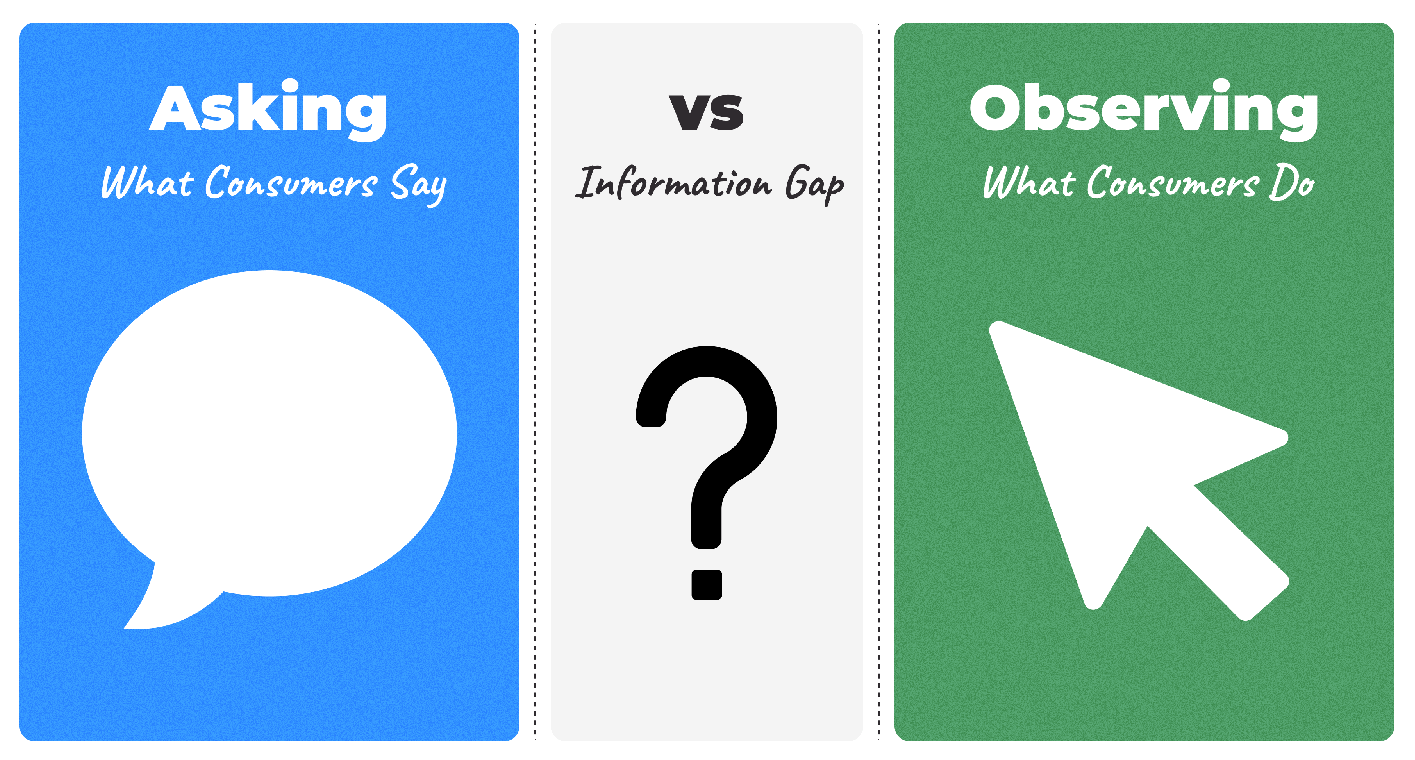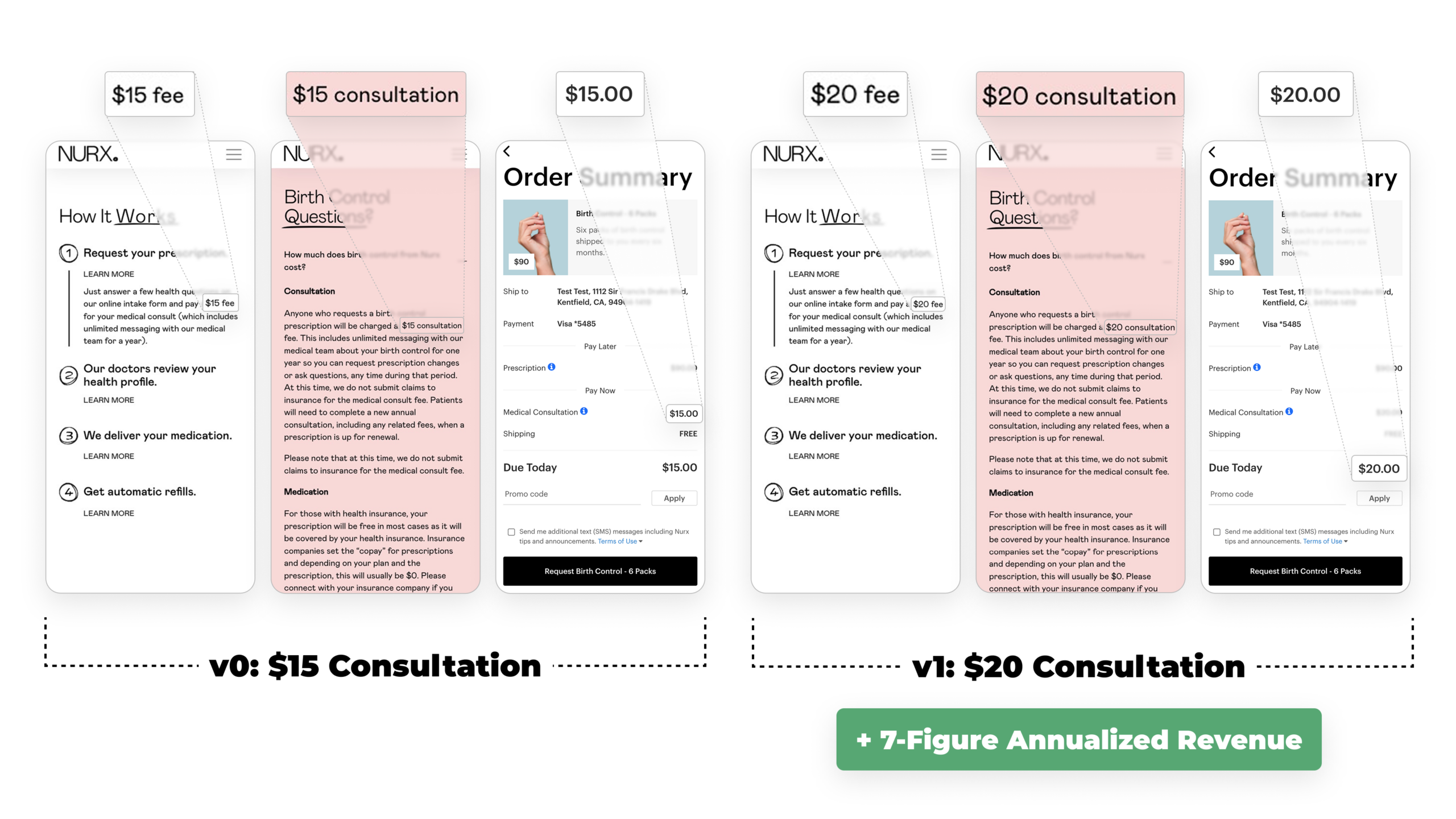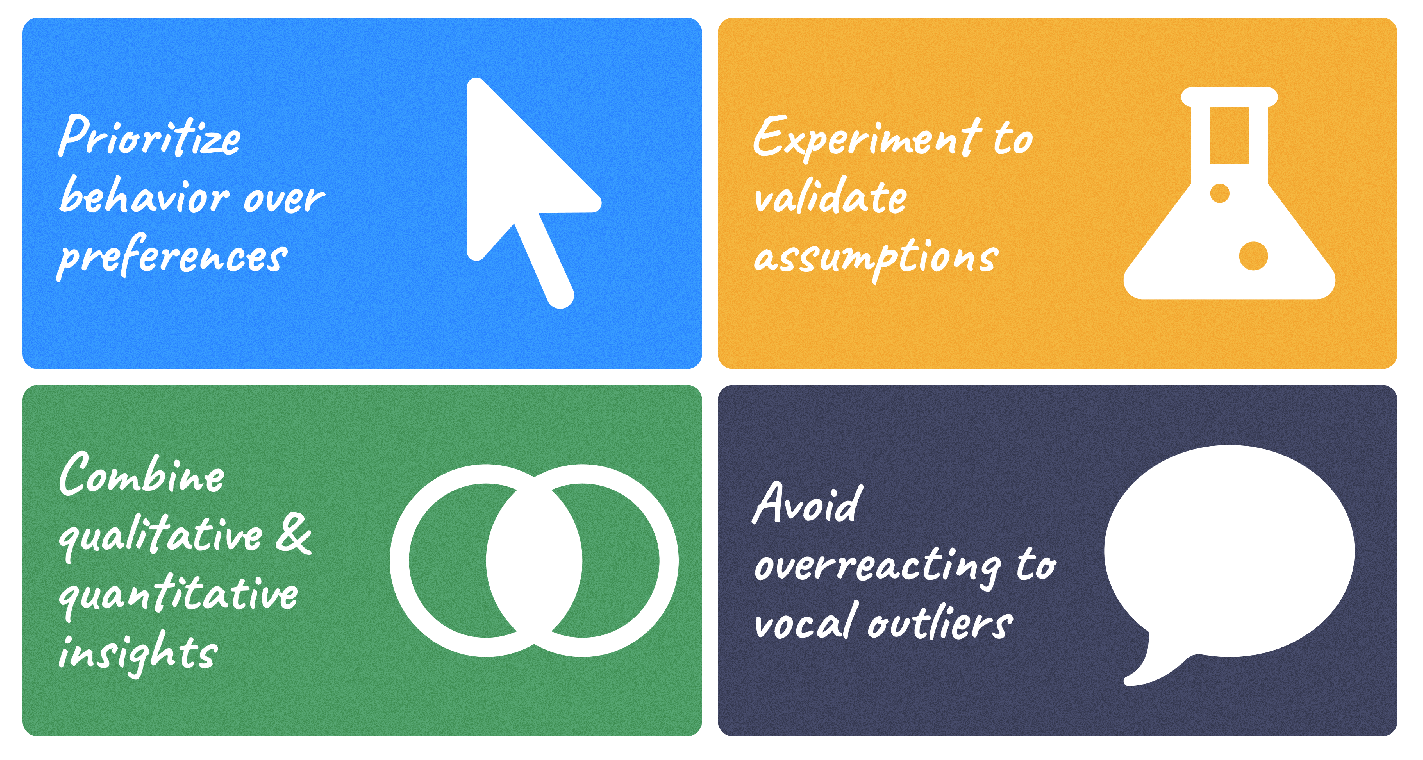Here’s the thing about consumers. They’re not liars…but they’re not exactly reliable narrators either.
As marketers, we’ve all been burned by the gap between what people say and what they actually do at some point in our careers. Surveys sound promising so you launch a feature. Focus groups nod in agreement. Everyone says they’d recommend the brand or splurge on the next big release. And then? Crickets.
The disconnect shows up everywhere. In one study, only about half of customers who said they’d endorse a brand actually followed through. Post-Covid research paints a similar picture. A 2021 McKinsey report found consumer optimism in the U.S. had bounced back to its highest levels since the pandemic. But instead of spending more, many shoppers tightened their belts. Saying one thing, doing another.
So why the disconnect? It’s not always intentional lying. It’s something a little more complicated and a lot more interesting.
The Neuroscience of Self-Deception
The brain has its own agenda.
 Why would consumers mislead even themselves about what they want or will do? The answer lies in human psychology and neuroscience. The brain is wired to favor internal consistency and preserve identity, sometimes at the expense of accuracy.
Why would consumers mislead even themselves about what they want or will do? The answer lies in human psychology and neuroscience. The brain is wired to favor internal consistency and preserve identity, sometimes at the expense of accuracy.
Researchers note that self-deception is a built-in cognitive strategy “to preserve [our] established view of [ourselves] and the world,” providing short-term comfort and stability⁴. This means individuals often rationalize away contradictions (a classic example of cognitive dissonance) to avoid the mental discomfort of admitting a change in beliefs or behavior.
Especially under stress or uncertainty (which, let’s be honest, is most of the time for the average person) our decision-making starts to shift. It becomes less deliberate, less goal-oriented, and more about habit or whatever feels familiar. Neuroscientists have found that acute stress, the kind baked into modern life, can actually reroute the brain’s control from thoughtful decision-making to automatic, habitual responses⁵.
This helps explain why in high-uncertainty environments, consumers’ behaviors often contradict their stated beliefs. The brain is prioritizing emotional comfort (sticking to one’s narrative) over logical adaptation. It’s a protective instinct: maintaining optimism or identity (“I’m the kind of person who will definitely buy organic” or “I’m financially stable”) even if reality doesn’t align.
The Information Gap: Asking vs. Observing
 So if people’s words don’t match their actions…what does that mean for how we collect customer insight and ultimately how we use that insight to inform strategy and decisions?
So if people’s words don’t match their actions…what does that mean for how we collect customer insight and ultimately how we use that insight to inform strategy and decisions?
The short answer: it means a lot of what marketers rely on, like surveys, interviews, NPS, and social listening, are still valuable but only for what they’re designed to do. They tell you what people say they want, how they feel about an experience, or how they perceive your brand.
That’s where the gap begins. These tools are great for directional understanding and gauging brand affinity, but when the stakes are tied to metrics like conversion rates, retention, or lifetime value, you can’t stop at what people tell you.
Continuing into the signals that come from testing and observing actual behavior are critical especially in a world where stress and uncertainty are the default. Companies that fail to monitor behavior in real time often end up making decisions based on outdated assumptions, and that’s a fast track to irrelevance.
Why Optimizing Based on Action Matters More in Uncertainty
When the environment is volatile, historical data and “industry best practices” lose their predictive power. The safest bet? See how people act right now, under today’s conditions.
That’s where testing comes in. Methods like A/B testing, UX experiments, personalization trials, painted door tests, and multivariate experiments give you live reads on behavior.
 A painted door test with telehealth provider Nurx explored price sensitivity for their birth control consultation fee. The experiment presented new customers with two price points, $17 and $20, against the existing $15 baseline. The results were surprising: new customers converted at a higher rate with the $20 fee, while returning customers showed little to no difference across prices. The clear takeaway was that a modest increase not only maintained demand but could unlock significant revenue potential. With a $20 fee applied to new orders and a 50 percent purchase-to-subscription rate, the projected impact was an additional 7-figure projected revenue gain.
A painted door test with telehealth provider Nurx explored price sensitivity for their birth control consultation fee. The experiment presented new customers with two price points, $17 and $20, against the existing $15 baseline. The results were surprising: new customers converted at a higher rate with the $20 fee, while returning customers showed little to no difference across prices. The clear takeaway was that a modest increase not only maintained demand but could unlock significant revenue potential. With a $20 fee applied to new orders and a 50 percent purchase-to-subscription rate, the projected impact was an additional 7-figure projected revenue gain.
A Culture of Experimentation creates a safety net against our biases and de-risks making changes that are counterintuitive to the journey we want our customers to take and against our business objectives. Every test generates evidence that will sharpen your strategy or steer you away from costly sidequests.
Brant Cooper, CEO of Moves the Needle, writes, “Rapid experimentation is a formidable tool that can help navigate [market] ambiguity, test assumptions, overcome biases and propel organizations toward success… It can help reduce uncertainty, generate evidence, and ultimately… drive business growth”⁹.
The more uncertain the environment, the more you should rely on live experiments and optimization. Real user behaviors are the compass guiding you through unknown conditions.
Bridging the Gap Between Insight and Action
Here are four practical strategies to close the intent-behavior gap:

-
Prioritize observed behavior over reported preferences: What people do is more predictive than what they say. Analytics, session replays, and live tests give you the “what” without the filter.
-
Use experimentation to validate assumptions: Treat every insight from surveys or interviews as a hypothesis, not a certainty. This approach has saved countless companies from overcorrecting based on vocal but unrepresentative feedback.
-
Combine qualitative and quantitative insights: Qualitative data gives you the why behind behavior; quantitative data shows the what. Together, they form a complete picture.
-
Avoid overreacting to vocal outliers: Some feedback will be loud but irrelevant. Give it weight in proportion to how representative it is of your actual audience.
At Cro Metrics, we’ve built cross-functional teams that respond to changing customer behavior in real time. Through our internal AI and predictive tools, like Impact Lens, we’re adding faster, more precise ways to prioritize which optimizations will have the greatest impact, so our clients can adapt before their competitors even notice the change.
If you want to build a program that moves with your customers, let’s build it together. [Schedule a 20-minute strategy consult]
References
- Fader, P. S., & Hardie, B. G. S. (2020). Customer-Base Audit: The First Step on the Journey to Customer Centricity. Wharton School Press.
https://www.whartonsp.com/customer-base-audit
- Keiningham, T. L., Cooil, B., Andreassen, T. W., & Aksoy, L. (2007). A longitudinal examination of Net Promoter and firm revenue growth. Journal of Marketing, 71(3), 39–51.
https://doi.org/10.1509/jmkg.71.3.039
- McKinsey & Company. (2023). Consumers are more optimistic—but are holding off on discretionary spending.
https://www.mckinsey.com/capabilities/growth-marketing-and-sales/our-insights/the-consumer-demand-recovery-and-lasting-effects-of-covid-19 - Schwabe, L., & Wolf, O. T. (2013). Stress and multiple memory systems: From ‘thinking’ to ‘doing’. Trends in Cognitive Sciences, 17(2), 60–68.
https://doi.org/10.1016/j.tics.2012.12.001
- Fisher, R. J. (1993). Social desirability bias and the validity of indirect questioning. Journal of Consumer Research, 20(2), 303–315.
https://doi.org/10.1086/209351
- Brenner, P. S., & DeLamater, J. (2016). Lies, damn lies, and survey self-reports? Identity as a cause of measurement bias. Social Psychology Quarterly, 79(4), 333–354.
https://doi.org/10.1177/0190272516628298
- Müller, J., & Möller, K. (2021). Managing customer experience in times of crisis: The impact of COVID-19 on consumer behavior. In Customer Experience Management: How to Design, Integrate, Measure and Lead (SpringerBriefs in Business).
https://link.springer.com/chapter/10.1007/978-3-030-65877-1_7
- Cooper, B. (2021). Disruption Proof: Empower People, Create Value, Drive Change. Wiley.
https://www.wiley.com/en-us/Disruption+Proof%3A+Empower+People%2C+Create+Value%2C+Drive+Change-p-9781119669145
- HubSpot. (2023). State of Marketing Report.
https://www.hubspot.com/state-of-marketing - Nielsen Norman Group. (2021). Quantitative vs. Qualitative Usability Testing. https://www.nngroup.com/articles/quant-vs-qual/
- Cagan, M. (2020). Empowered: Ordinary People, Extraordinary Products. Wiley. https://svpg.com/empowered/

